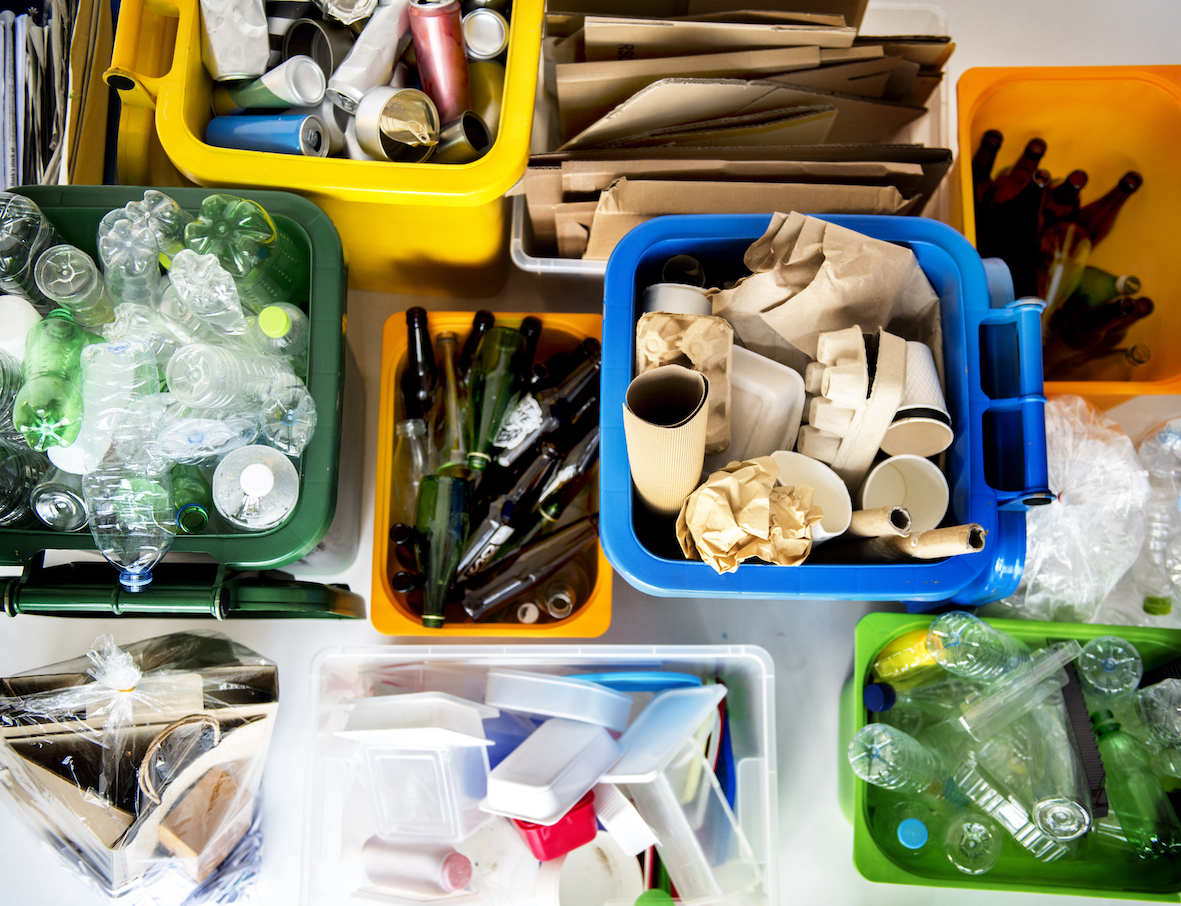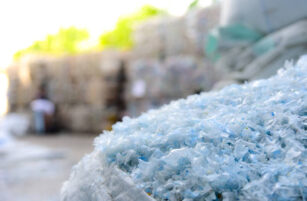- In this article, we turn our attention onto product labelling.
- To this day, there’s great confusion around what means something’s ‘recyclable’ versus ‘recycled’.
- Although many manufacturers are now providing more useful information on their products, we’ve still got a way to go.
The Symbols (Resin Codes)
In 1988, the former US Plastics Society introduced a system of Resin Identification Codes (RIC). Since 2008, it’s been administered by the American Society for Testing and Materials (ATSM). Many readers will be familiar with the symbols, although not necessarily know the meanings behind them.

The symbols were changed in 2013, from cycling clockwise arrows (called a Mobius loop), to equilateral triangles, although it’s difficult to see how this is an improvement as the Mobius loops are still used in many countries.
Regular readers of these articles will recognise that, for food and beverage plastic products, RIC 1, 2, 4, 5 and 6 are the important ones, with the likelihood of 6 being phased out in this sector.
By and large, the European countries have used the RICs system, but other countries have adopted greater granularity based on the Chinese model.
The RIC system was not designed with consumers in mind and says nothing about how much of each group is actually recycled, only that it could be recycled. It was developed to assist recycling companies and others in identification during the recycling process, as different types of plastics often need to be kept separate for effective recycling.
Consumer Confusion
There have been many attempts to produce an easy-to-understand consumer label, but this has proven difficult.
This is partly due to the lack of space on the finished product; it has to compete with other labels on nutrition and ingredients.

Sadly, in some cases, there have been deliberate attempts to exaggerate, deceive, or produce symbols and information that can’t be verified. This is sometimes referred to as ‘greenwashing’.
If you’re looking for a good example of how difficult it is to introduce consumers to recycling, look at the European ‘Green Dot’ (Der Grüne Punkt) system, invented in Germany in 1991. The system is used by more than 130,000 companies and encompassed 460 billion packages.
There’s a licence fee paid by the packaging manufacturers, which is covered under the European ‘Packaging and Packaging Waste Directive – 94/62/EC’. It applies in 26 European countries, with Italy not taking part and, even pre-Brexit, the UK not taking part.
The Green Dot scheme was designed to reduce the amount of packaging used by suppliers. In that way, it’s been successful, but it’s relevance to recycling is less. The logo means a company has joined the scheme, not that the package is fully recyclable and there are no associated words with it.

The Guidelines for Providing Product Sustainability Information (GPPSI)
‘The Guidelines’ is the most important document on this subject and was produced by the United Nations Environment Programme in 2017.
It has many international sponsors and individual contributors, which provide clear and concise examples of the dos and don’ts on this subject, including some from the food and beverage sector.
One of the best discusses how to label a box of chocolates with a cardboard exterior, a plastic tray and wrapper.
Below, you’ll find the Guidelines’ explanation on two topics.
“While the Mobius loop is an internationally recognised symbol for recycling, its use without text assumes that all consumers understand its meaning, and/or that all of the product’s material can be recycled. It also only shows that the packaging is recyclable but not that this recycling is actually available via local infrastructure.
“If wanting to comply with the international standard ISO 14021 (ISO 2016a) a qualified claim must adequately convey the limited availability of collection facilities.”
To be fair, these types of symbols may have a use, for example on kerbside collection boxes of different colours to separate waste. That’s a different issue to the label. The Guidelines not only discuss pre-recycling labels, but also post-recycling and receptacles made from recycled materials.
“Avoid general sustainability benefit claims. Broad, general sustainability benefit claims are difficult, if not impossible, to substantiate and can mislead or confuse consumers.
“Terms that should be avoided are (non-exhaustive list): ‘environmentally friendly’, ‘eco-friendly’, ‘eco’, ‘good for the environment’, ‘sustainable’, ‘green’, ‘carbon friendly’, ‘natural’, ‘non-toxic’, ‘ecologically safe’, ‘pollutant free’, ‘clean’, ‘zero emissions’, ‘an ethically correct choice’.
“If such a general claim is made, it should be accompanied by clear and prominent qualifying language/standards that limit the claim to a specific benefit or set of benefits.
“For example, a claim such as ‘eco-friendly: made with recycled materials’ would be misleading if:
1. The statement ‘made with recycled materials’ is not clear and prominent
2. The trader cannot substantiate that the entire product, excluding minor, incidental components, is made from recycled material
3. Making the product with recycled materials does not make the product more environmentally beneficial overall
4. The advertisement’s context implies other misleading claims.
“There must be a direct link between the sustainability claim and the product to avoid generalization of the claim. The consumer must be able to differentiate between product and brand information. The information (visual, text-based or via design) provided to the consumer must be explicit and easy to understand and must be complemented, if otherwise misleading, with an explanatory statement.”
There’s a Long Way to Go
Although progress has been made on providing useful information on plastic (and other materials) to consumers, there’s a long way to go.
In the next article, we’ll look at how countries have tackled this issue and specifically how the UK has become one of the most innovative.
Czarnikow can structure tailored risk management solutions on both recycled and virgin packaging. If you’d like to explore how Czarnikow can help you manage your price risk management, please talk to Maximilian Kirby (MKirby@czarnikow.com).

Other Opinions You Might Be Interested In…
- Plastics: Making the Indispensable Environmental
- Plastics: How They Are Made
- Plastics and Resins: The Key Producers














